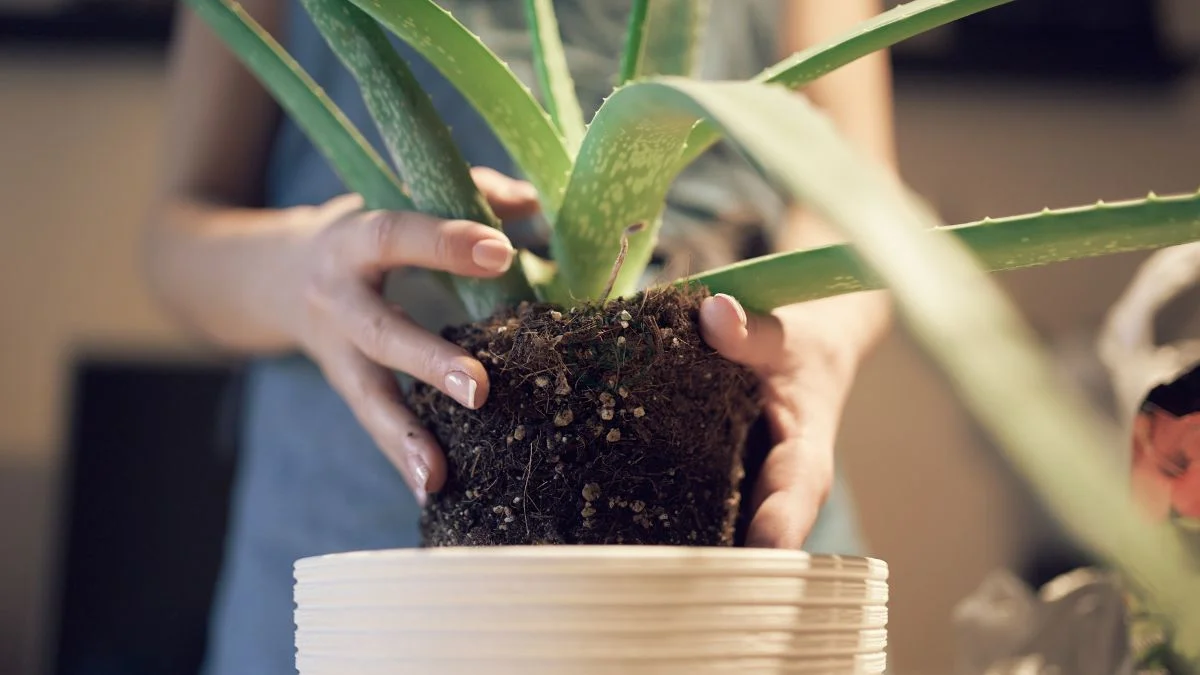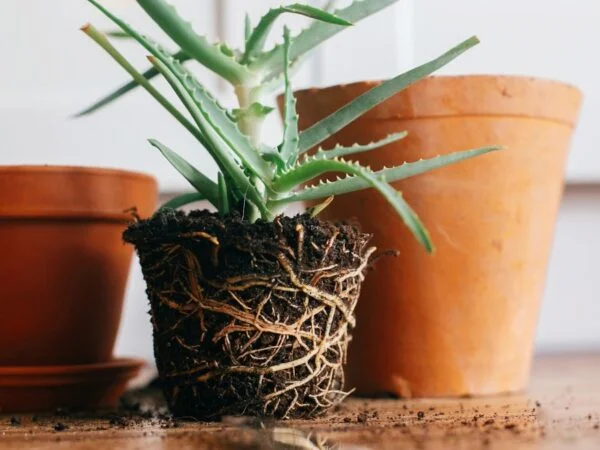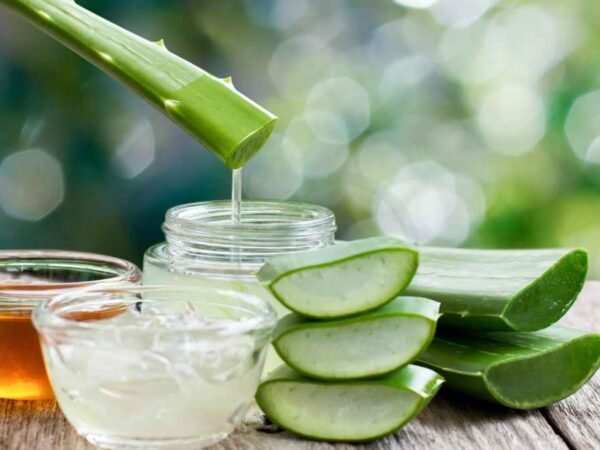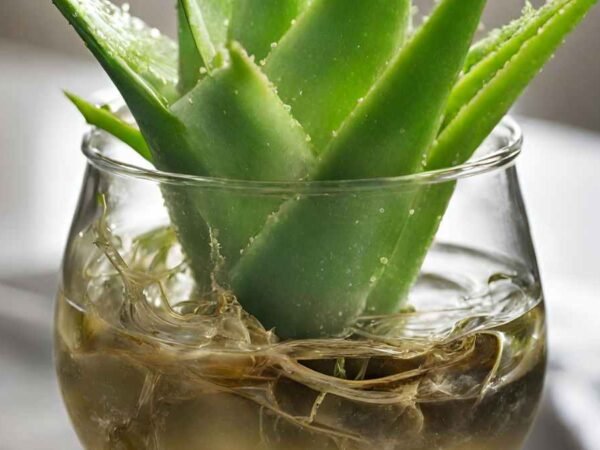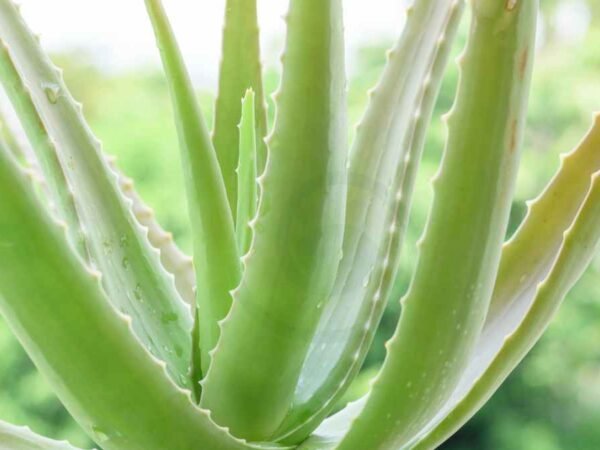Transplanting aloe plants can seem daunting, but with the right guidance, it's a breeze. Say goodbye to wilting leaves and hello to thriving succulents by mastering this essential skill. Whether you're moving your aloe outdoors for some sun or simply repotting for better growth, understanding the process is key. Get ready to witness your aloe flourish in its new home!
Key Takeaways
- Prepare Adequately: Before transplanting aloe plants, ensure you have all the necessary tools and materials ready.
- Handle with Care: When repotting aloe plants, be gentle to avoid damaging the roots and leaves.
- Follow a Systematic Approach: Use the step-by-step guide provided to successfully repot your aloe plant without causing stress.
- Promote Growth: Splitting aloe pups, offshoots, can help in expanding your plant collection and encouraging healthy growth.
- Provide Proper Care: After transplanting, adhere to best practices for watering, sunlight, and soil to ensure the plant thrives post-transplantation.
- Address Issues Promptly: Be aware of common problems that may arise post-transplant and troubleshoot them promptly to prevent further damage.
Understanding Aloe Transplantation
Why Repot
When transplanting aloe plants, it's essential to check for signs of the plant outgrowing its current pot. This can manifest as roots emerging from the drainage holes or visibly filling the container. Look for opportunities to propagate the main plant during transplantation by separating offsets or pups that have developed alongside the mother plant. By repotting aloe plants, you ensure their health and encourage further growth by providing fresh soil and space for root expansion.
Best Time to Transplant
Consider repotting your aloe plant when it displays signs of stress such as wilting, yellowing leaves, or stunted growth. These indicators suggest that the plant may benefit from being moved to a larger container with fresh soil. To ensure successful transplantation, choose the right season based on the specific needs of aloe vera. Monitor the growth of your aloe plant closely to determine the optimal timing for transplanting, typically avoiding extreme temperatures or periods of dormancy.
Preparing for Repotting
Choosing Soil
When repotting aloe plants, opt for well-draining soil to prevent root rot and ensure proper aeration. Avoid soil mixes with unsustainable additives like peat moss, which can harm the plant's root system. Consider using Rosy soil mix, known for promoting optimal growth in aloe plants.
Selecting Containers
For successful repotting, choose slightly wider pots than the aloe plant to allow room for new shoots and root stalk development. Prefer porous containers such as ceramic or terracotta that promote airflow to the roots. Ensure the selected containers have adequate drainage holes to prevent waterlogging.
Gathering Tools
Before beginning the repotting process, gather essential tools like a trowel, gloves, and a new pot to accommodate the mother plant and any new shoots. Have a watering can or spray bottle ready for post-transplantation care to maintain proper moisture levels. Keep your workspace clean and organized to facilitate a smooth and efficient transplanting process.
Step-by-Step Guide to Repotting
Removing Aloe Plant
When transplanting an aloe plant, gently loosen it from the current pot to prevent root damage. Check the roots for overcrowding or any signs of harm. Handle with care to avoid damage.
Preparing New Pot
Fill the fresh container with well-draining potting mix to support aloe growth. Ensure the new pot is clean and has proper drainage holes. Create a suitable environment for optimal aloe plant growth.
Transplanting Aloe
Center the aloe plant in the new pot for balanced development and aesthetics. After transplanting, water the plant adequately to encourage root establishment. Secure the plant in position within the pot to prevent shifting.
Splitting Aloe Pups
Identifying Pups
When transplanting aloe plants, start by locating offsets or pups near the main plant. Look for healthy pups with their own roots to ensure successful propagation. Separate them carefully.
Separating Pups
Transplant successfully by gently detaching each pup from the parent plant. Let the cuts callus before repotting to prevent rot. Replant in suitable soil for growth.
Potting Pups
After separating aloe pups, repot each in individual containers for optimal growth. Place them in indirect sunlight and water appropriately to support their development.
Aftercare Best Practices
Soil Tips
When caring for aloe plants, use well-draining soil to prevent waterlogging, which can lead to root rot. Avoid soil mixes that may hinder aloe plant growth by being too compacted. Opt for organic soil options for sustainable growth and overall plant health.
Watering Techniques
Water aloe plants sparingly to avoid overwatering and root rot issues. It's essential to allow the soil to dry out between watering sessions to maintain proper moisture levels. Adjust the watering frequency based on the specific needs of each plant.
Light Conditions
For optimal growth, place aloe plants in bright, indirect sunlight as they thrive in these conditions. Avoid exposing them directly to sunlight as it can cause leaf damage. To ensure even light distribution and balanced growth, rotate the plant occasionally.
Troubleshooting Common Issues
Signs of Stress
Aloe plants experiencing wilting leaves or stunted growth are showing signs of stress. Changes in leaf color can also indicate stress levels. Address these issues promptly to maintain plant health.
When aloe plants show signs of stress, it is crucial to act quickly. By monitoring for wilting leaves, stunted growth, and changes in leaf color, you can identify and address the problems early on. Adjusting watering schedules, light exposure, and overall care routine can help alleviate stress and promote healthy growth.
Reviving Aloes
To revive stressed aloe plants, start by adjusting their watering and light conditions. Trimming any damaged or dead leaves will encourage new growth. Providing extra care during this revival process is essential for the plant's recovery.
During the revival process, closely monitor the aloe plant's response to the adjustments made in watering and light conditions in the garden. Trimming away damaged leaves not only improves the plant's appearance but also stimulates new growth. Giving extra attention to the plant during this critical period can significantly aid in its recovery.
Enhancing Growth Post-Transplant
Fertilizing Tips
When fertilizing aloe plants post-transplant, remember to use a balanced fertilizer in moderation. Overfeeding can harm the plant's growth. Apply fertilizer sparingly during the growing season for optimal results. Monitor how the plant reacts to fertilization and make adjustments accordingly.
Regular Maintenance
For regular maintenance of transplanted aloe plants, conduct regular inspections to check for any signs of pests or diseases. Promptly address any issues to prevent them from spreading. Prune away dead leaves and offsets to promote overall plant health. Consistency is key; maintain a steady care routine to ensure the continued well-being of your aloe plants.
FAQs on Aloe Transplantation
Timing
When is the best time to transplant aloe plants in the garden? Aloes should be transplanted during their active growth phase in spring or early summer. This timing aligns with their natural growth cycle, promoting successful transplantation.
Pot Selection
What type of pot is ideal for aloe transplanting?
Choose a well-draining pot that is slightly larger than the current one. Terra cotta pots are excellent choices as they allow excess moisture to evaporate, preventing root rot.
Soil Requirements
What kind of soil should be used for aloe transplantation?
Opt for a succulent-specific soil mix, ensuring proper drainage and aeration for the aloe plant's roots. Avoid heavy soils that retain water, which can lead to root rot.
Root Examination
Should I check the roots in my garden before transplanting my aloe plant?Inspect the root system carefully for any signs of rot or damage. Trim off any unhealthy roots using sterile tools to encourage new healthy root growth post-transplant.
Watering After Transplantation
How should I water my aloe plant after transplanting?
After repotting, refrain from watering the aloe immediately. Wait for 3-5 days, allowing the plant to adjust to its new environment before resuming regular watering.
Sunlight Exposure
How much sunlight does an aloe plant need post-transplantation?
Place your newly transplanted aloe in indirect sunlight initially to prevent sunburn. Gradually introduce it to more direct sunlight over several weeks as it acclimates.
Common Mistakes
Avoid these common mistakes when transplanting aloes:
- Overwatering: Excess moisture can lead to root rot.
- Using the wrong soil: Ensure proper drainage with succulent mixes.
- Skipping root examination: Check for any issues before repotting.
Additional Tips
- Consider repotting aloes every 2-3 years to refresh their soil and provide more space for growth.
- If your aloe has offsets, you can separate and replant them during transplantation.
- Monitor your plant closely post-transplantation for any signs of stress or disease.
Closing Thoughts
You now possess the knowledge and skills to successfully transplant your aloe plants. Remember the crucial steps: understand aloe transplantation, prepare for repotting, follow the step-by-step guide, split aloe pups carefully, implement aftercare practices, troubleshoot issues, and enhance growth post-transplant. By applying these strategies, you ensure the health and vitality of your aloe plants. Take action today to give your beloved succulents the best care they deserve.
Frequently Asked Questions
Can I transplant my aloe plant at any time of the year?
Yes, aloe plants can be transplanted at any time of the year. However, it is best to avoid extreme temperatures and ensure the plant has enough time to establish itself before harsh conditions.
How do I know if my aloe plant needs to be repotted?
You may need to repot your aloe plant if you notice overcrowded roots, the plant outgrowing its current pot, or poor drainage causing root rot. Check the roots for congestion and monitor growth.
What type of soil is best for transplanting aloe plants?
A well-draining cactus or succulent mix is ideal for transplanting aloe plants. Ensure the soil is gritty and porous to prevent waterlogging and root rot. You can also mix in some perlite for better drainage.
Should I water my aloe plant immediately after transplanting?
It's recommended to wait 1-2 weeks after transplanting before watering your aloe plant. This allows the roots to adjust and reduces the risk of overwatering, which can lead to root rot. Monitor the plant closely during this period.
How often should I fertilize my newly transplanted aloe plant?
Avoid fertilizing your newly transplanted aloe plant for at least 3-4 weeks. Once the plant has settled into its new pot, you can start with a diluted succulent fertilizer every 2-3 months during the growing season. Watch for signs of overfertilization.
Image Source: Paid image from CANVA

